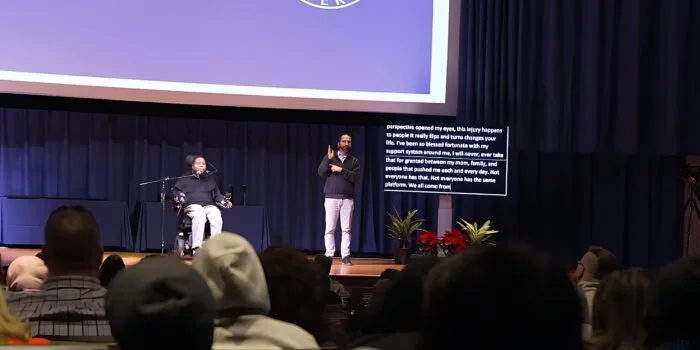Everyone’s rights need to be respected and protected in our world. To ensure justice and equality for all, human rights have evolved around this ideal. So, what is a human rights conference?
It’s a vital gathering where people from various backgrounds unite to discuss and tackle issues related to these fundamental rights.
Globally, these conferences promote awareness, share knowledge, and inspire action to protect human rights. In addition to engaging discussions and informative presentations, they often involve collaborative workshops as well.
Stay tuned as we dive deeper into the significance of these conferences and their role in advancing human rights globally.
History of Human Rights Conference
Human rights conferences have been a fascinating evolution. It all began with the desire to create a world where everyone’s rights are respected.
The first significant milestone was the Universal Declaration of Human Rights in 1948, a landmark document that set the standard for human rights globally. Over the years, these conferences have become more frequent and diverse. They focus on various issues such as gender equality, racial discrimination, and indigenous peoples’ rights.
As a result, voices from around the world are heard and groundbreaking ideas are shared. One of the key aspects of these conferences is their ability to bring together individuals from different backgrounds to collaborate and find solutions. Policies and changes in the world have been shaped by them.
As we look back, human rights conferences have been instrumental in advancing human rights. This has created a more just and equitable world.
What Is a Human Rights Conference?
Global voices coming together to champion justice, equality, and dignity for all. There is no doubt that this is the essence of a human rights conference.
But what exactly is a human rights conference?
It’s a platform where activists, experts, and policymakers come together to discuss challenges, share solutions, and inspire action to advance human rights globally.
The role of these conferences in shaping human rights advocacy and policy is essential.
Now, let’s dive deeper into the key factors that define these meaningful gatherings.
Purpose and Goals
The primary aim of a human rights conference is to address pressing human rights issues and create a roadmap for change. These events provide a space for dialogue, education, and collaboration, with the ultimate goal of promoting and protecting human rights worldwide.
Participants and Stakeholders
A diverse group of individuals and organizations participate in human rights conferences. It includes representatives from governments, international organizations, non-governmental organizations (NGOs), academia, and civil society. Human rights issues are better understood through each participant’s perspective.
Themes and Topics
Human rights conferences cover a wide range of topics, reflecting human rights’ multifaceted nature. Refugee rights, racial discrimination, gender equality, and indigenous rights are common themes. A timely and relevant discussion is guaranteed at these events.
Formats and Activities
Conferences typically feature a variety of formats, such as keynote speeches, panel discussions, workshops, and networking sessions. These different formats allow for in-depth exploration of topics, interactive learning, and the sharing of best practices.
Impact and Outcomes
Human rights conferences can have far-reaching impacts. As a result of these events, effective policies, partnerships, and increased awareness can be developed. As well as advocacy, they catalyze national and international action.
Human rights conferences bring together diverse stakeholders to address and advance human rights. To create a more just and equitable world, they promote dialogue, collaboration, and action.
What to Expect from a Human Rights Conference?
Conferences on human rights can be enlightening and transformative. These gatherings are not just meetings; they are platforms where passion meets purpose.
The platforms advocate for a world where dignity and equality are upheld for everyone. So, what can you expect from a human rights conference? Let’s explore the key elements.
Diverse Perspectives
One of the most enriching aspects of a human rights conference is the diversity of participants. You’ll meet activists, scholars, policymakers, and survivors. People’s perspectives encourage a deeper understanding of human rights.
Engaging Discussions
Prepare for thought-provoking discussions and debates. Whether it’s through panel discussions, workshops, or conference keynote speeches, you’ll be exposed to a range of ideas and approaches to tackling human rights challenges.
Networking Opportunities
Human rights conferences provide a unique opportunity to connect with like-minded individuals and organizations. These connections can lead to collaborations, partnerships, and a stronger sense of community among those working in the field.
Inspiration and Empowerment
Perhaps the most impactful aspect of a human rights conference is the sense of inspiration and empowerment it provides. Seeing resilience stories, hearing innovative solutions, and being surrounded by passionate individuals can inspire you to take action.
As a whole, a human rights conference offers a rich learning and networking environment. It’s a chance to deepen your understanding, connect with others, and be part of a collective effort to promote and protect human rights.
What Is the Universal Human Rights Index (UHRI)?
The Universal Human Rights Index (UHRI) stands as a beacon in the world of human rights, offering a comprehensive database that tracks the implementation and progress of human rights commitments across the globe.
This innovative tool brings transparency and accountability, shining a light on how countries are upholding their obligations to protect and promote human rights. Let’s dive deeper into what makes the UHRI so pivotal.
Purpose and Function
The UHRI serves as a one-stop shop for information on the human rights performance of countries. It compiles data from various sources, including reports from UN treaty bodies, special procedures, and the Universal Periodic Review.
This wealth of information helps governments, NGOs, and researchers to monitor progress, identify gaps, and advocate for improvements.
Key Features
One of the standout features of the UHRI is its accessibility. Users can easily search for human rights recommendations and observations by country, right, or affected group. This makes it an invaluable resource for anyone looking to understand the human rights landscape in a specific context.
Impact and Usage
The UHRI has become a crucial tool for promoting accountability and informed action. By providing clear and comprehensive data, it empowers stakeholders to hold governments accountable and to push for meaningful change in the protection of human rights.
Global human rights advancement is made possible through the Universal Human Rights Index. It offers a clear and detailed picture of how countries perform, paving the way for informed advocacy and action.
FAQs
Now that we explore human rights conferences! And you know that these gatherings are crucial platforms for discussing, promoting, and protecting human rights globally.
Let’s dive into some frequently asked questions to better understand the significance and scope of these important events.
What Is the International Conference of Human Rights?
The International Conference of Human Rights was a landmark event adopted by a consensus of 171 states on 25 June 1993. It was a pivotal moment in the history of human rights, setting the stage for global cooperation and the advancement of human rights principles.
How Many International Human Rights Conventions Are There?
There are nine core international human rights treaties and nine optional protocols. These treaties cover a wide range of human rights issues, from civil and political rights to economic, social, and cultural rights.
What Topics Are Typically Discussed at A Human Rights Conference?
Human rights conferences cover a broad range of topics, including gender equality, freedom of expression, racial discrimination, refugee rights, and the rights of indigenous peoples. The discussions aim to address current challenges and explore solutions to protect and promote human rights.
What Is the Significance of Networking at A Human Rights Conference?
Networking at a human rights conference is crucial for building connections and collaborations. It allows participants to share experiences, exchange ideas, and form partnerships that can enhance their work in promoting and protecting human rights.
Conclusion
The essence of these impactful gatherings has been uncovered in our exploration of “What is a human rights conference?”. Human rights conferences are platforms where diverse voices come together to discuss, debate, and collaborate on advancing human rights globally.
During these events, you can network, learn, and be inspired to take action. As you plan to attend one of these conferences, remember to prepare for engaging discussions, embrace diversity, and make the most of networking opportunities.
With an open mind and a collaborative spirit, you can contribute to meaningful change and be part of a global movement for human rights.








